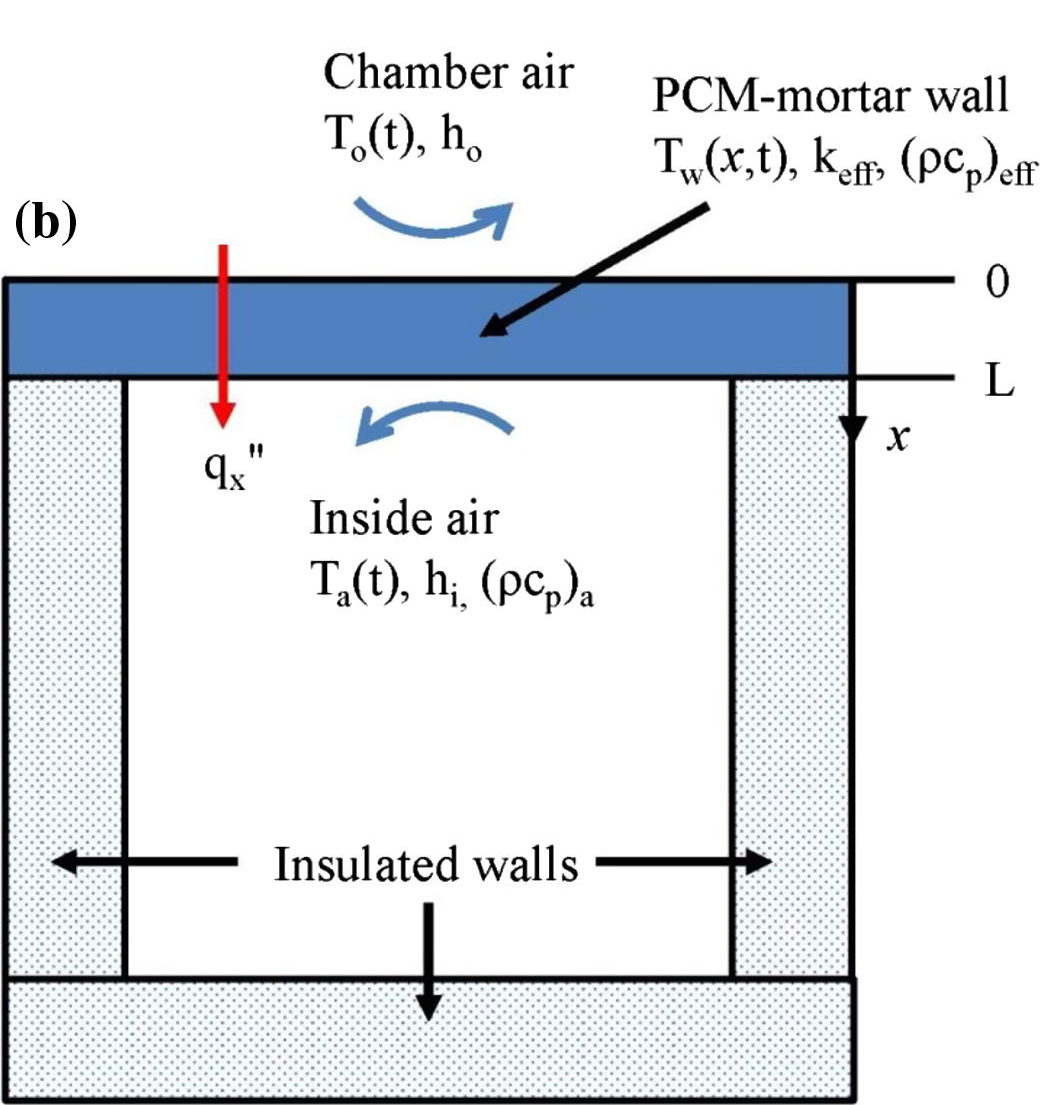Citation
Young, B.A.; Falzone, G.; Wei, Z.; Sant, G.; Pilon, L. Construction and Building Materials 2018, 162, 584–595.
Young, B.A.; Falzone, G.; Wei, Z.; Sant, G.; Pilon, L. Construction and Building Materials 2018, 162, 584–595.
This study presents a convenient approach to rapidly assess the thermal performance of building envelopes containing phase change materials (PCMs) or other building materials. It establishes that the transient thermal behavior of full-scale building test structures featuring envelopes with PCMs can be represented by a reduced-scale test cell conveniently placed inside an environmental chamber. Indeed, PCM-composite envelopes have been considered for reducing and time-shifting the thermal load on buildings thanks to the latent heat associated with reversible transition between liquid and solid phases. First, a thermal model coupling outdoor, wall, and indoor temperatures and accounting for PCM latent heat was developed. It was validated against experimental temperature measurements within a reduced-scale test cell enclosure placed in an environmental chamber and subjected to a series of sinusoidal temperature cycles. Then, scaling analysis of the experimentally-validated thermal model was performed. It identified eight dimensionless numbers governing the transient thermal behavior of building structures with envelopes containing PCMs. The scaling analysis was validated using detailed numerical simulations for different enclosure geometries and outside diurnal climate conditions. Finally, the method was demonstrated on full-scale experiments reported in the literature. It can be used to assess building envelope thermal performance by designing representative reduced-scale experiments without requiring a significant amount of material, time, or space.
